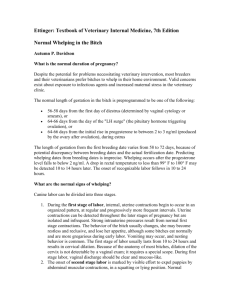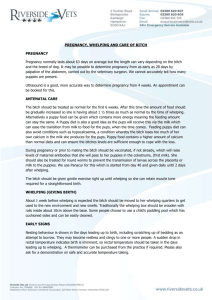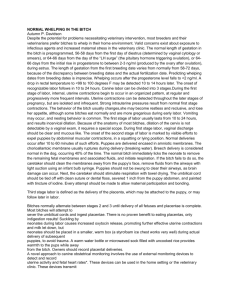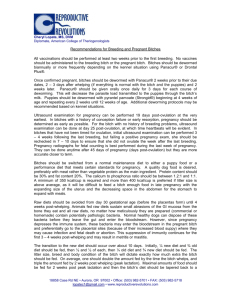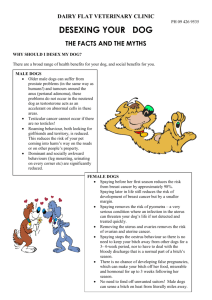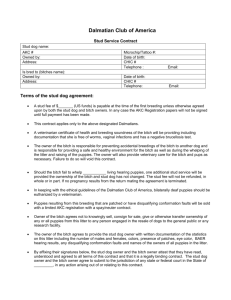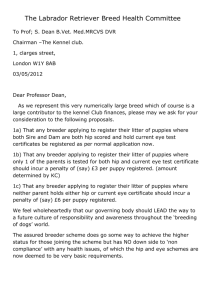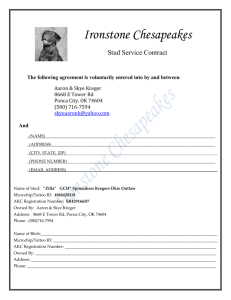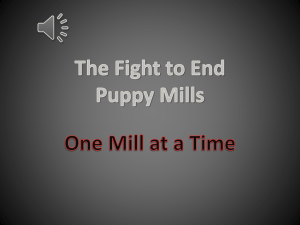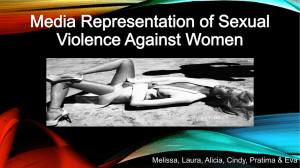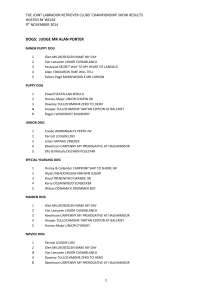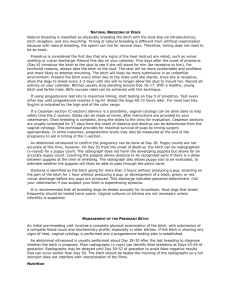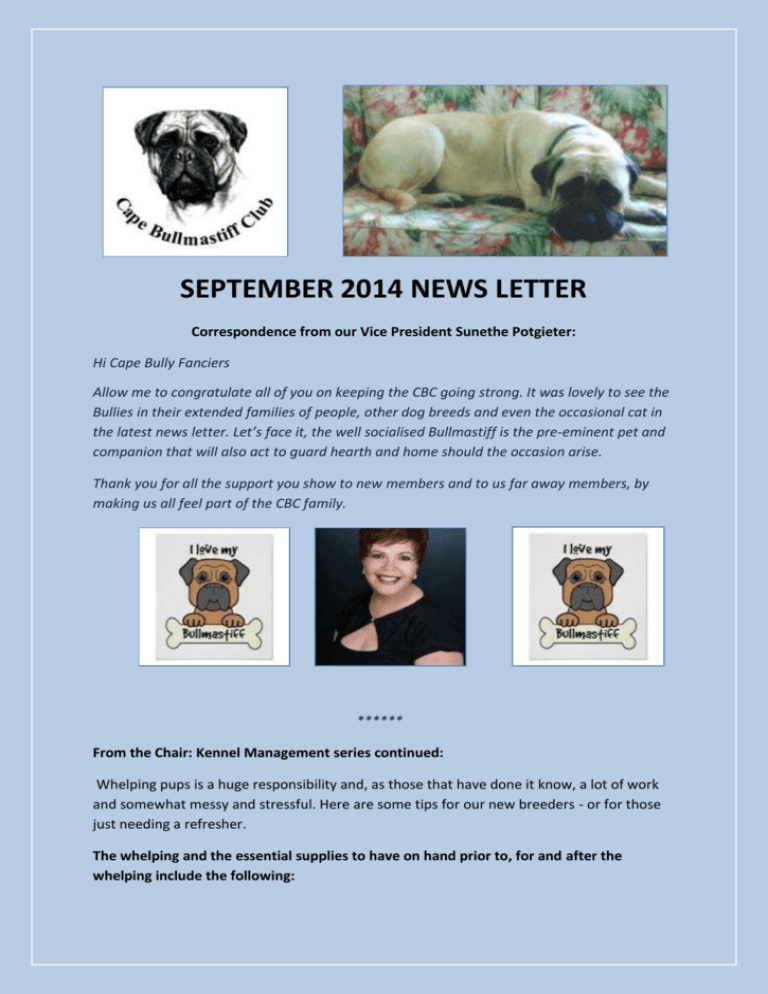
SEPTEMBER 2014 NEWS LETTER
Correspondence from our Vice President Sunethe Potgieter:
Hi Cape Bully Fanciers
Allow me to congratulate all of you on keeping the CBC going strong. It was lovely to see the
Bullies in their extended families of people, other dog breeds and even the occasional cat in
the latest news letter. Let’s face it, the well socialised Bullmastiff is the pre-eminent pet and
companion that will also act to guard hearth and home should the occasion arise.
Thank you for all the support you show to new members and to us far away members, by
making us all feel part of the CBC family.
******
From the Chair: Kennel Management series continued:
Whelping pups is a huge responsibility and, as those that have done it know, a lot of work
and somewhat messy and stressful. Here are some tips for our new breeders - or for those
just needing a refresher.
The whelping and the essential supplies to have on hand prior to, for and after the
whelping include the following:
A suitable whelping box in a quiet secure area is a must.
A wooden box with removable ‘pig rails’ and an entrance door is recommended. The door
should be able to close if necessary and there should be ample space for the bitch and her
pups even with the ‘pig rails’ in situ. The ‘pig rails’ can also be removed during the birthing
to allow for more space and as the pups grow these can be removed permanently and the
box converted into a playpen for the puppies
An adequate supply of news paper with which to line the whelping box during labour is
essential. Coloured news print is believed to contain toxic materials and is best avoided.
There should be enough towels to wipe the dam and pups down. Never use new bathroom
towels as they get badly stained and a supply of warm water should be easily accessible.
A heater or floor heating to maintain the room temperature, which is best kept at 85
degrees Fahrenheit or 30 degrees Celsius in the first week. It can be decreased gradually as
the pups grow.
Content puppies in a whelping box of adequate proportions. Note the thermometer in the
right hand corner. Children should always be supervised if allowed to cuddle and bond
with the puppies
Once born, the puppies are initially unable to regulate their own temperatures and will die
of hypothermia if left for long periods without adequate heat therefore a room
thermometer to measure the temperature is essential.
An anal thermometer to record the bitch’s temperature which can drop with the approach
of labour.
It is a good idea to monitor her temperature for a couple of days before her expected date
of delivery. However a drop in temperature is not always a reliable indication of immanent
labour. A steep drop of more than 3 degrees in her normal temperature and a change in her
vital statistics could indicate shock and the veterinarian should be contacted immediately.
Dry bed or blankets for the box after whelping are a must.
A hot water bottle or heating pad (wrapped for safety in a towel if necessary) can be placed
in the puppy holding box. Puppies left in the whelping box while the bitch is birthing run the
risk of being trampled on inadvertently and also remain chilled from the continuous
exposure to the amniotic fluid and blood expelled with each birth.
If heating and ventilation or air conditioning is used it should be fully controlled.
The puppy holding box in which the pups are placed after birth and while the dam is
continuing with her labour, should be kept near the bitch so she can see that her youngsters
are safe. This box need not be of a fancy design or make and a carton box from the grocery
store can suffice. It must be cleaned before hand and discarded after use.
A scale with an adequate weighting capacity: The average weight of a new born Bullmastiff
puppy is 500gm. The weight should be recorded daily thereafter.
A note pad, pen and clock to record the date, weight and time of birth of each new arrival
will help to keep an accurate record of the litter.
Sterile surgical gloves in case intervention is necessary if a pup gets stuck in the birthing
canal or if a vaginal examination need to be done. A suitable lubricating gel such as KY Jelly
should be at hand. An inexperienced person should never attempt this procedure.
‘Who is who’
A pair of blunt ended scissors is required if intervention with the cord separation is needed
along with the two pairs of mosquito forceps to clamp the umbilical cord. Most bitches
attend to this chore quickly and easily on their own and consume the placenta at the same
time. However, if they do not or cannot proceed with this task, the breeder/ birth attendant
must be prepared to assist immediately. The forceps crush the umbilical cord and prevent
further bleeding. It is usually not necessary to tie off the cord, but should it be, then dental
floss is a suitable agent with which to do it.
A suitable antiseptic cleaning agent. Swabbing the bitch’s vulva post partum is essential to
good hygiene. The birth attendant’s hands should also be kept clean throughout.
A neonatal sucker to remove excess mucous and amniotic fluid out of the respiratory tract
of the newborn. If these fluids are not removed the pup may well inhale them with tragic
consequences.
A litter of all the same sex and colour can be very confusing, even to the expert breeder.
Red and fawn coloured puppies usually appear grey at birth and a very dark brindle puppy
can appear black. These colours change as the pups grow.
Oxytocin (to stimulate contractions) and a calcium replacement (to prevent hypocalaemia)
with a syringes and needle for administration are advised. However these drugs are only to
be used in an emergency and under the direction of a veterinarian.
Clean cool drinking water for the bitch to which bicarbonate of soda can be added if the
bitch becomes acidotic due to excessive panting in the first stages of labour.
A milk substitute, bottles and teats if the bitch has a known problem with her milk supply.
Plastic bags for refuse removal.
A telephone. Your veterinarian should always be notified of the commencement of labour
and be available should problems arise. This is especially important for breeders who live in
the rural areas. Help is not always at hand and advice can be given telephonically.
During this difficult period it is essential to be available for the bitch. She needs your
reassurance and most bitches will happily co-operate with their owners if they know this.
Never restrict her if she wishes to go outside to empty her bladder or bowel, but do go with
her. Many puppies have been born while the bitch has been straining to evacuate her
bowel.
The actual labour, if uncomplicated, consists of three stages and in the first stage, which can
last anything from twelve to forty eight hours, these are the clinical signs that indicate the
bitches cervix is opening and she is preparing to give birth:-Restlessness and anxiety with a desire to nest and dig a hole. She may pace around the
garden or try and tear up the blankets in her basket.
-Panting which can be quite distressing for the first time breeder as some bitches will do
this throughout the entire labour
-Refusing food or vomiting up eaten food
- Lethargy and a desire to curl up and sleep.
Apart from guiding the bitch to her whelping box with words of comfort it is best not to
interfere with her during this stage.
Although in great pain most bitches will suffer in silence owing to the Bullmastiff’s well
known high threshold to pain. Because of this the breeder/ birth attendant must be extra
vigilant or problems may go unnoticed.
Stage two of a normal labour incorporates the contractions, which can be both felt and
seen, and the delivery of the pups. The expulsion of the placenta follows each puppy and is
the third stage of labour. Because these two occurrences happen almost simultaneously it
can be difficult to determine if all the placentas have been expelled.
Some breeders let their bitches consume all the placentas which contain vital nutrients to
replenish the bitch’s strength. Other breeders do not allow them to eat any placentas at all.
It is actually quite difficult to prevent the bitch from doing this, and as long as there are no
contraindications it is best to leave well alone. If she does consume all the placentas she
may not want to eat her meal for a day or so. She will also have green / black mucky stools
for a couple of days.
If there is any doubt in respect of a retained placenta the veterinarian will administer
Oxytocin when the bitch is presented to her for her post natal check up. The veterinarian
will also complete a routine examination on all the pups and either confirm their health or
any problems that there may be. Usually the breeder would have picked these up at birth.
Any congenital or hereditary defects that will permanently affect the puppy are best dealt
with then and there. Euthanasia is painless and a better option than the possible long term
suffering that may follow. If the breeder does choose to maintain afflicted pups and / or any
pups who fail to thrive, he/she must be prepared for an awful lot of extra work with little
reward.
Sometimes the pups arrive almost on top of each other with a normal vertex presentation
being just as common as a breech presentation. Sometimes there can be a sustained length
of time between the arrivals. More than three hours between pups could well be an
indication that all is not well and veterinary intervention is necessary. If the bitch is seen to
be contracting and straining with no result then it is imperative to call your veterinarian.
There could be a pup stuck in the birth canal and if it cannot be re-positioned manually, a
Caesarean Section may be necessary.
All rights reserved on the Kennel Management series: Robertson: first published 2000
***********
A COPY OF THIS BOOK HAS BEEN DONATED TO THE CAPE BULLMASTIFF CLUB BY MEMBER
MAGDA LA DOUX – IT WILL BE RAFFLED FOR CLUB FUNDS
Thank you Magda
Dr Rachel Shuttleworth has copies available for purchase at R750 until the end of
September and can be contacted on 0826521111 or rachel@animalfertility.co.za
DID YOU KNOW THAT THE CBC WEBSITE IS LINKED IN TO BOTH THE
KUSA AND DOGWORLD SA WEBSITES?
Why don’t you take a look? Any suggestions for improvements or
ideas are very welcome.
WELCOME TO THE CAPE
CH SUNDABISH JASPER CONRAN OF JUOHN (Imp UK)
Owner: Okker Botes
And welcome to another new member Robin Marks who owns Tomka Banjo – seen below
*******
SHOW RESULTS
W & H Breeds Association Golden Reef - Judge Karen Furk (RSA) – 17th August 2014
Chizelhurst Chinga BJ & 3rd in Junior Working Group
Northern Free State Kennel Club – Judge Don Mahoney (AUS) 29 Aug 2014
Chizelhurst Chinga BOB, BJ & CC Bitch
Bloemfontein Kennel Club – Judge Sue Impey (RSA) 30 August 2014
Chizelhurst Chinga BOB, BJ & CC Bitch
Kimberly Kennel Club – Judge Mary Anne Brocious (USA) 31 August 2014
Chizelhurst Chinga BJ & CC bitch
Chizelhurst Chinga
Ch LaGratitude Durango Duke BA
Breede River Valley Kennel Club – Judge Barron Africa (RSA) 14 September 2014
Reserve Best of Breed Ch LaGratitude Durango Duke BA
*******
NB: SCAM ALERT
DOGS ADVERTISED ON GUMTREE UNDER FALSE SIRE /DAM
It has been brought to the notice of the CBC that certain ‘scammers’ are using
the identities of our top dogs to sell litters on Gumtree. The photos are placed
and false claims are made.
Breeders are cautioned to be extras careful when dealing with potential puppy
buyers and should use their discretion about giving out details.
AND AN UPDATE ON THE DOG SMUGGLING SYDICATES WHICH CONTINUE TO
PLAGUE US
*******
Available from Pet Creations – contact Johan Groenewald 0793146351 / 0218510362
www.petcreations.co.za
*******
The Hattingh family of Gauteng have said farewell to their beloved Bullmastiff Xena. She
was a beautiful brindle that was part of a litter they bred and who crept deep into their
hearts. She was loving and kind and was hand reared as her mom did not have enough
milk.
“We love you Xena and will forever miss you”
*******
The information in this magazine is confined to its members. Statements or opinions maybe
expressed in this communication that are personal to the writers and do not necessarily
represent the views of the Club.
The Cape Bullmastiff Club
Post Net suite 65
Private bag X15
Somerset West
7129
Affiliated to KUSA # 1151
www.capebullmastiffclub.co.za & info@capebullmastiffclub.co.za
Fun in abundance

